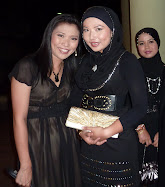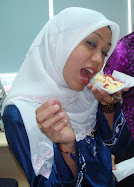Following on last week's blog post, I did successfully make thosai telur although there is GREAT room for improvement. I used the following recipe, from the book The Indian Spice Kitchen (Manisha Bharadwaj):
2 2/3 cup any variety of rice (1 pound)
2/3 cup split, skinless black lentils (5 oz; called urad dhal)
1 teaspoon salt
1 onion or potato cut in half (for greasing the griddle)
6 tablespoons corn oil
1. Soak rice and lentils separately for at least 4 hours in plenty of water.
2. Grind to a paste (separately) in a blender, adding water as required to make a thick batter.
3. Mix the two batters together, add salt, and leave to ferment in a warm place for at least 8 hours.
4. Heat an iron griddle or heavy skillet. Dip the cut onion or potato in oil and smear over pan.
5. Stir the batter and pour a ladleful into the middle of the skillet. Spread the mixture quickly with a circular motion starting in the middle, using the back of the ladle.
6. After a minute, pour the egg onto the top of the thosai. With a large griddle, one can get away with using an entire egg on a large (10-12 inch) thosai. With my wife's small pan, I could pour in a small amount of egg. Thus, I scrambled 3 eggs in a separate dish, and then ladled a small amount of egg onto each thosai (see photo).
7. Turn over and cook the backside. In restaurants, they will fold a large thosai over in half, not cooking the topside directly.
Some cookbooks suggest throwing out the first thosai as it serves to 'season' the pan, and may not be as good as the subsequent ones.
My thosai batter turned out alright, but I had to add water to get it to 'settle down' (the overnight fermentation produces a lot of gas bubbles), and make it thin enough to spread thinly. Still, I ended up with a thicker thosai than one gets at Tamil restaurants. I also ended up with egg that ran off the thosai mountain onto the pan. (Not so good.)
My favorite thosai maker suggested that I did not have a griddle that was hot enough, or big enough. Here is a video of his setup, which produces absolutely delicious, crisp and crunchy thosai.





